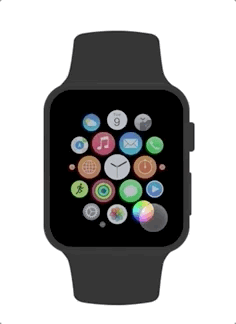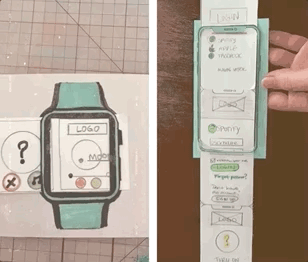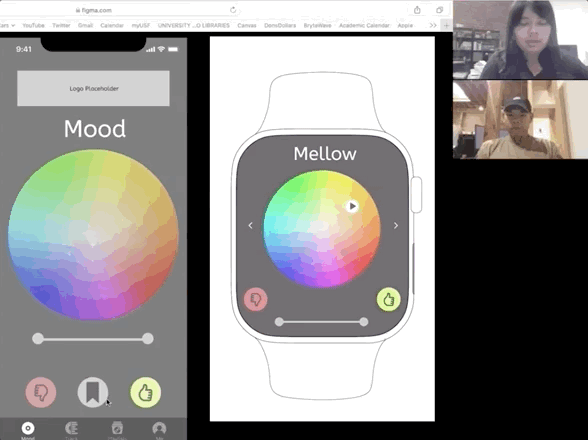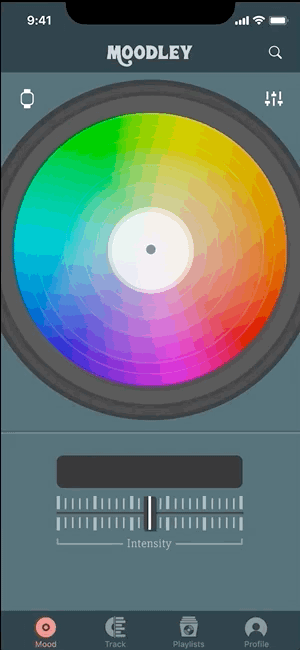My Role: UX Researcher, UX designer
My Team: Jay Corcoran-Shaffer, Ana Oacena, & Justin Wong
Music and Mood Tracking
Moodley is a multisensory app that uses heart rate, color and sound to curate a listening experience that can gradually shift you into different moods. Track your mood and listening patterns and receive personalized affirmations based on your monthly activity.
Solution:
Track your mood patterns through an activity you do everyday. When you track your moods through less intrusive ways such as listening history, you’ll be able to recognize patterns and open a dialogue with yourself about how your habits are affecting you.
Problem:
People are unsatisfied with the amount of effort they put into their emotional wellness, but still fail to prioritize it in their daily lives
click to enlarge
People’s Relationship
with Mental Health
From the beginning, my team established that we would like to create a tool that helped people improve their mental health. We began this project by doing five 1-on-1 interviews and also conducting some online polls to gain insight on people’s mental health habits.
Affinity Diagram
click to enlarge
Insight:
Originally, we thought having an interactive journal would be a useful tool to allow users to track their moods and reflect on patterns in order to correct them. Although users admired the idea, ultimately they did not seem interested in using a digital journal as a mood tracker.
“I could be doing more for my mental health, but I also don’t want to feel like I am dwelling on things I can not change.”
“When I try to start a new habit, my dedication sometimes fizzles out after a few weeks”
Even with this set back, our research does confirm our assumption that people are unsatisfied with the amount of time they dedicate towards their mental health.
Mental Health Made Easier
Mindfulness can be practice in everything you do. Shifting our mood tracker idea to be done through an everyday activity such as listening to music will allow people to be proactive about their mental health without disrupting their busy lives.
In order to gather data on mood patterns in a passive way, we created an application that tracks your heart rate and listening patterns.
After a few days you can see what emotions you’ve had and reflect on how effectively you’ve managed them.
More About Moodley
For Apple Watch users, Moodley would detect a sudden change in heart rate. A prompt will appear asking if user would like to listen to a playlist that can gradually guide you to a different heart rate or even keep your momentum going.
Beyond your heart rate, you can also tap into a mood through our color picker. After a few days of listening you’ll be able to see patterns in your moods, colors and listening habits. You’ll receive affirmations that correspond with your activity.
For users who do not have an Apple Watch, they can still enjoy the companion app and all the features besides the heart rate tracking.
Midfi Wireframes:
click to enlarge
User Tests
The early stages of our Moodley prototype were met with a lot of enthusiasm. Conceptually, people enjoyed the combination of how color, music and mood can relate to each other. The user interface did require some more development.
Mid fi Uster Tests Results:
“what if people associate different feelings with each color?
(for Apple Watch) the picker is too small to be precise with my choices
What Moodley Taught Us
Moodley was a good lesson in not getting too attached to concepts but rather listen and cater to users needs. By letting go of our interactive journaling app that my team was initially so excited about, we were able to create a project that was received really well.
Through trial and error, we were also able to improve upon the interface so the user flow was more intuitive to use
Next steps:
Our team would like to continue to develop Moodley features, specifically the calendar feature. We would like add some interactive elements and include fun UX writing.
What do you think of Moodley? Let me know your feed back at damiroleros@gmail.com
More Case Studies: Guzi | Teensource









